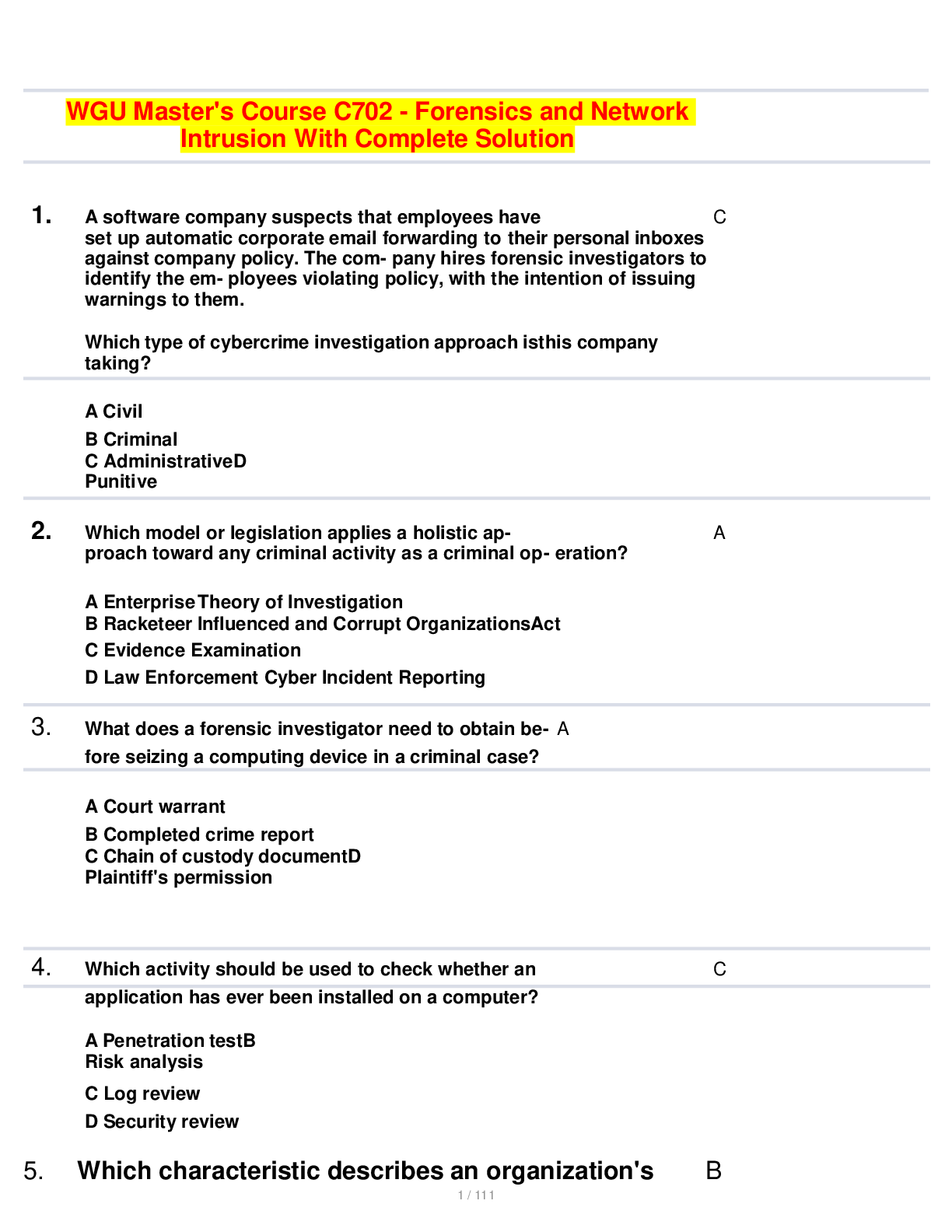Health Care > EXAM > WGU Forensics and Network Intrusion - C702 (All)
WGU Forensics and Network Intrusion - C702
Document Content and Description Below
WGU Forensics and Network Intrusion - C702 Computer forensics -ANSWER refers to a set of methodological procedures and techniques to identify, gather, preserve, extract, interpret, docume... nt and present evidence from computing equipment that is acceptable in a court of Law Cybercrime is defined -ANSWER as any illegal act involving a computing device, network, its systems, or its applications. It is categorized into two types based on the line of attack: internal attacks and external attacks Computer crimes -ANSWER pose new challenges for investigators due to their speed, anonymity, volatile nature of evidence, global origin of the crimes and difference in laws, and limited legal understanding Approaches to manage cybercrime investigations include -ANSWER civil, criminal, and administrative approaches Digital evidence is -ANSWER "any information of probative value that is either stored or transmitted in a digital form". It is of two types: volatile (Power off its lost) and non-volatile (now difference if off) Forensic readiness refers to -ANSWER an organization's ability to optimally use digital evidence in a limited period of time and with minimal investigation costs. Helps maintain Business Continuity. Practice Drills. ' Plan: 1. Identify potential evidence required. 2. Determine Source 3. Define Policy 4. establish Policy 5. Identify if Full/formal investigation is required. 6. create process for documenting procedure 7. Legal advisory board 8. Keep Incident response team ready. includes technical and non-technical actions that maximize an organization's competence to use digital evidence. Organizations often include computer forensics as part of their -ANSWER incident response plan to track and prosecute the perpetrators of an incident Which of the following is true regarding computer forensics? -ANSWER Computer forensics deals with the process of finding evidence related to a digital crime to find the culprits and initiate legal action against them. Which of the following is not an objective of computer forensics? -ANSWER Document vulnerabilities allowing further loss of intellectual property, finances, and reputation during an attack. What is not an impact of cybercrime? -ANSWER Huge financial gain Which of the following is true of cybercrimes? -ANSWER Investigators, with a warrant, have the authority to forcibly seize the computing devices. Which of the following is true of civil crimes? -ANSWER The initial reporting of the evidence is generally informal. Which of the following is a user-created source of potential evidence? -ANSWER Address book Which of the following is a computer-created source of potential evidence? -ANSWER Steganography Under which of the following conditions will duplicate evidence not suffice? -ANSWER When original evidence is in possession of the originator Rules -ANSWER Rule 101: Scope (in US) Rule 102: Purpose (truth & Just) Rule 103: Rulings on Evidence Rule 104: Preliminary Questions Rule 105: Limited Admissibility(proper scope) Rule 502: Attorney-Client Privilege and Work Product; Limitations on Waiver Rule 608: A Witness's Character for Truthfulness or Untruthfulness Rule 609: Impeachment by Evidence of a Criminal Conviction Rule 614: Court's Calling or Examining a Witness Rule 701: Opinion Testimony by Lay Witnesses Rule 705: Disclosing the Facts or Data Underlying an Expert's Opinion Rule 801: Definitions That Apply to This Article; Exclusions from Hearsay Rule 803: Exceptions to the Rule Against Hearsay-Regardless of Whether the Declarant is Available as a Witness Rule 804: Exceptions to the Rule Against Hearsay-When the Declarant is Unavailable as a Witness Rule 901: Authenticating or Identifying Evidence Rule 1001: Definitions that apply to this article Rule 1002: Requirement of the Original Rule 1003. Admissibility of Duplicates Rule 1004. Admissibility of Other Evidence of Content Minimizing the tangible and intangible losses to the organization or an individual is considered an essential computer forensics use. -ANSWER True Cybercrimes can be classified into the following two types of attacks, based on the line of attack. -ANSWER Internal and external Espionage, theft of intellectual property, manipulation of records, and Trojan horse attacks are examples of what? -ANSWER Insider attacks or primary threats External attacks originate from outside of an organization or can be remote in nature. Such attacks occur when -ANSWER there are inadequate information-security policies and procedures. Which type of cases involve disputes between two parties? -ANSWER Civil cases involve disputes between two parties, which may include an individual versus a company, an individual versus another individual, or one company versus another. ________ is the standard investigative model used by the FBI when conducting investigations against major criminal organizations. -ANSWER Enterprise Theory of Investigation (ETI) Gramm-Leach-Bliley Act (GLBA) -ANSWER requires companies that offer financial p [Show More]
Last updated: 2 years ago
Preview 1 out of 77 pages

Buy this document to get the full access instantly
Instant Download Access after purchase
Buy NowInstant download
We Accept:

Reviews( 0 )
$11.00
Can't find what you want? Try our AI powered Search
Document information
Connected school, study & course
About the document
Uploaded On
Sep 12, 2022
Number of pages
77
Written in
Additional information
This document has been written for:
Uploaded
Sep 12, 2022
Downloads
0
Views
86

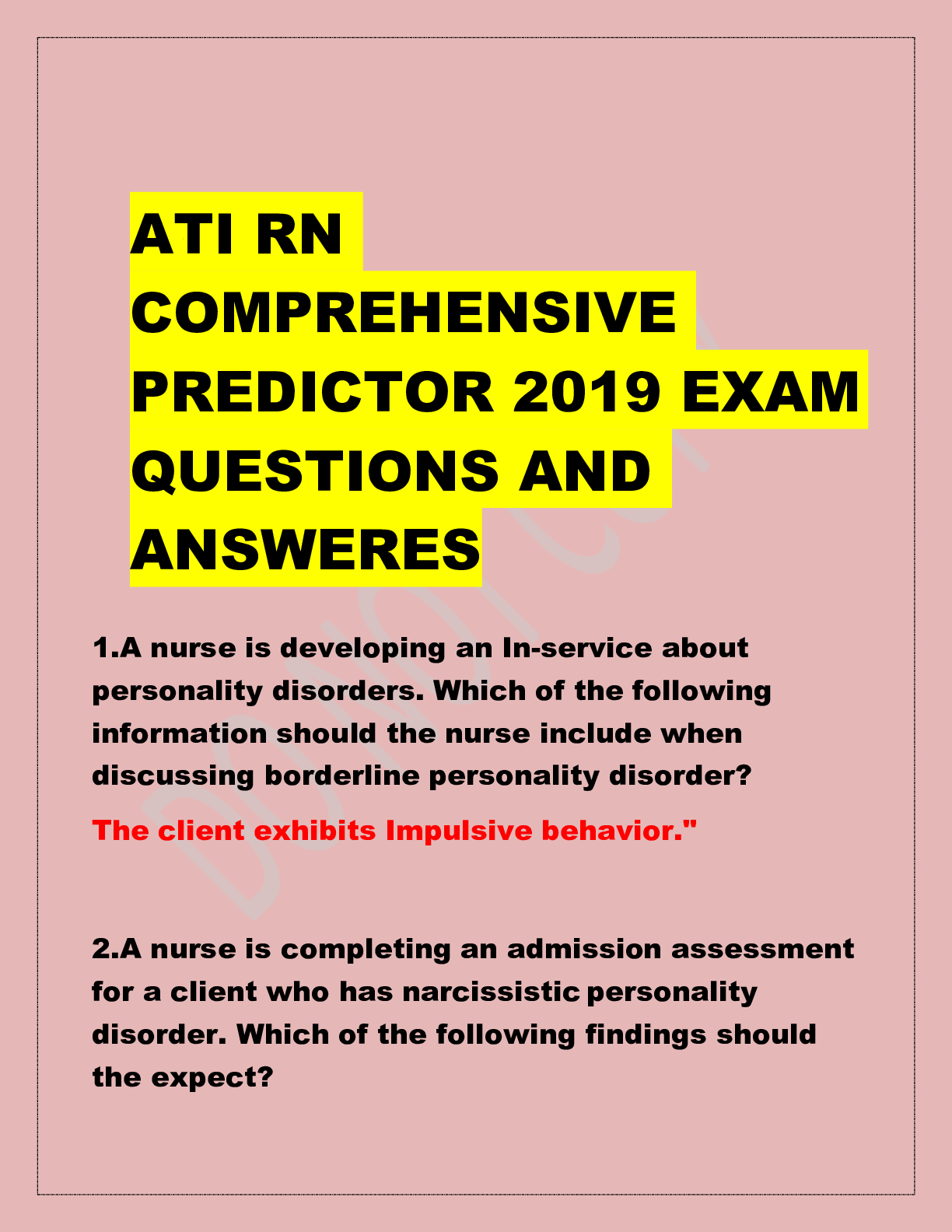


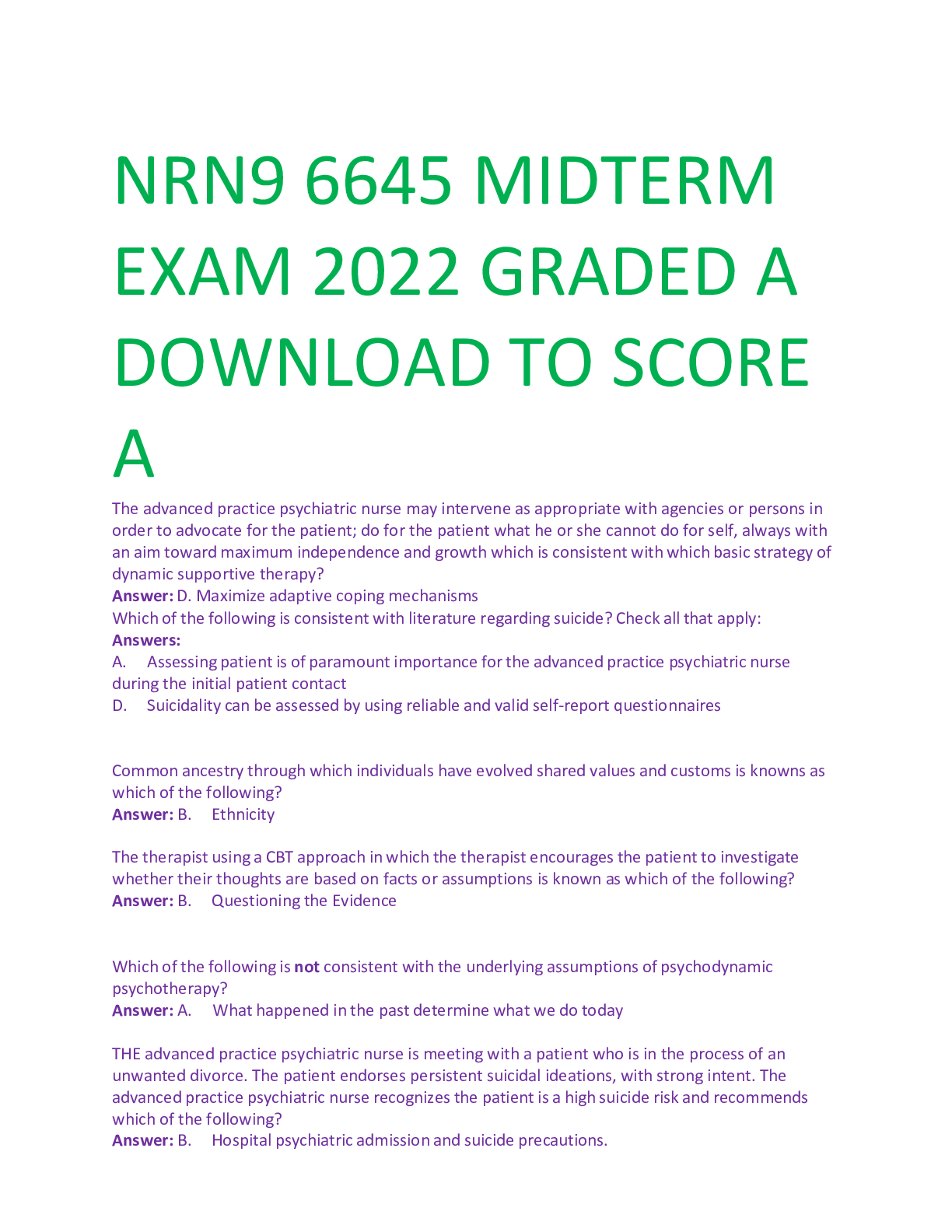

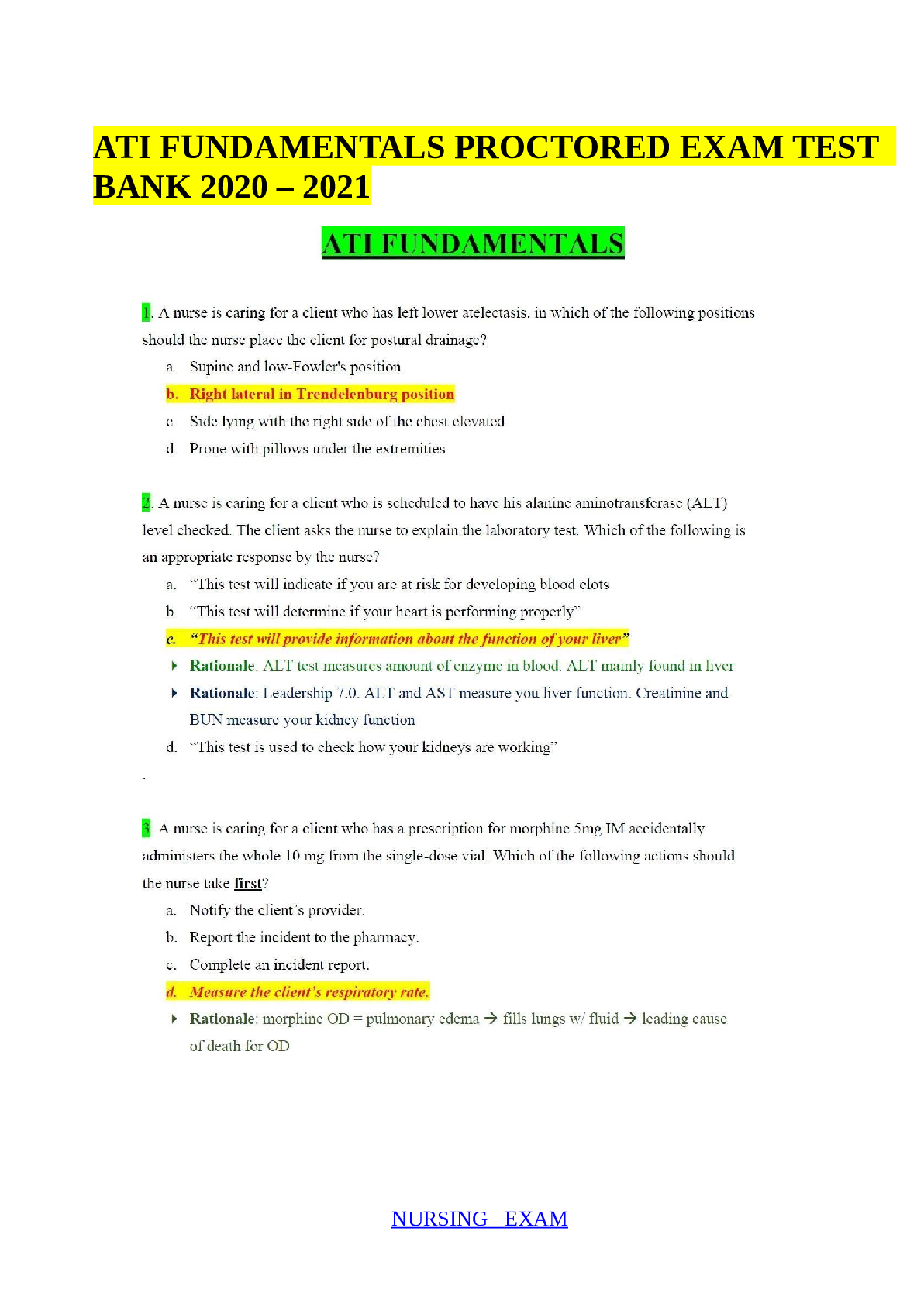
.png)
.png)




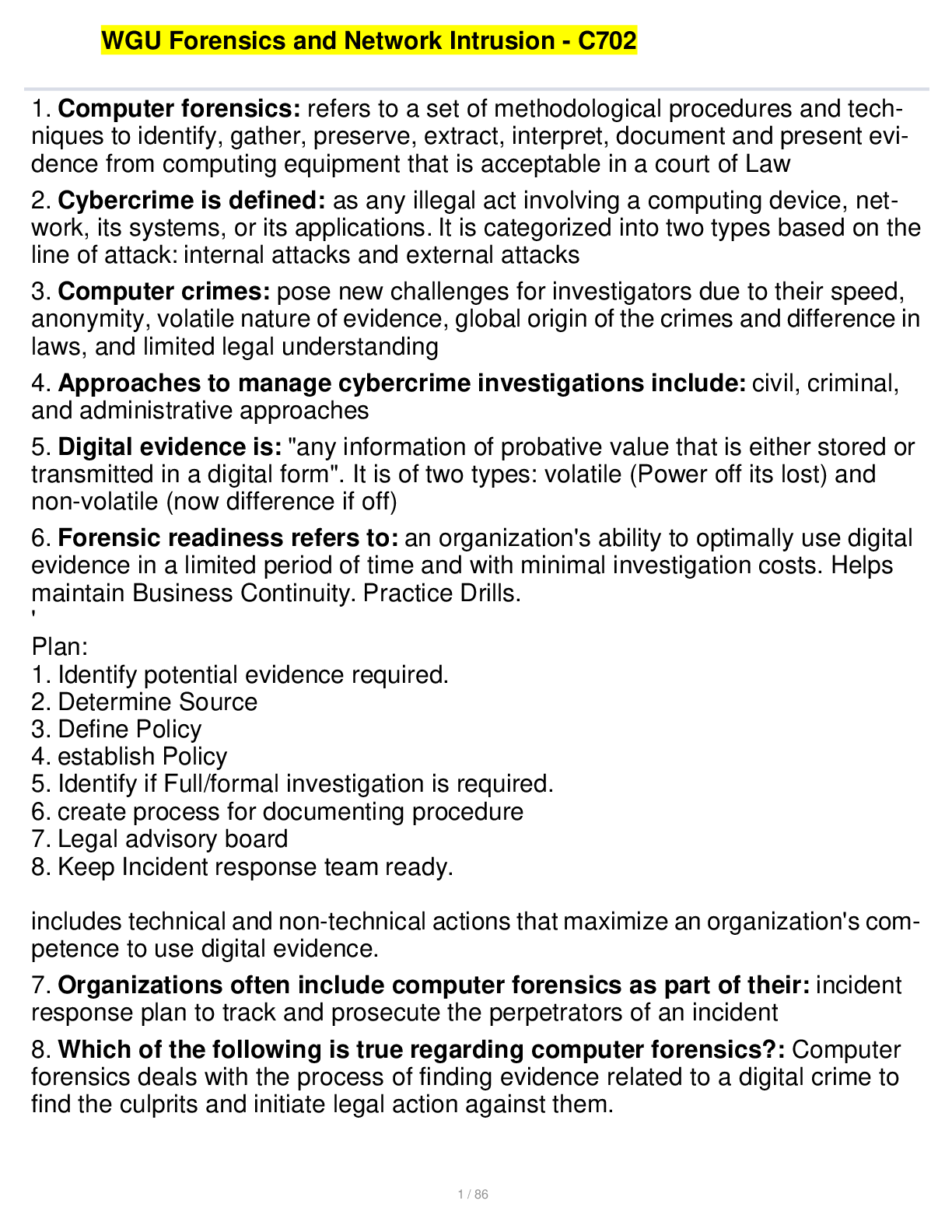



.png)
